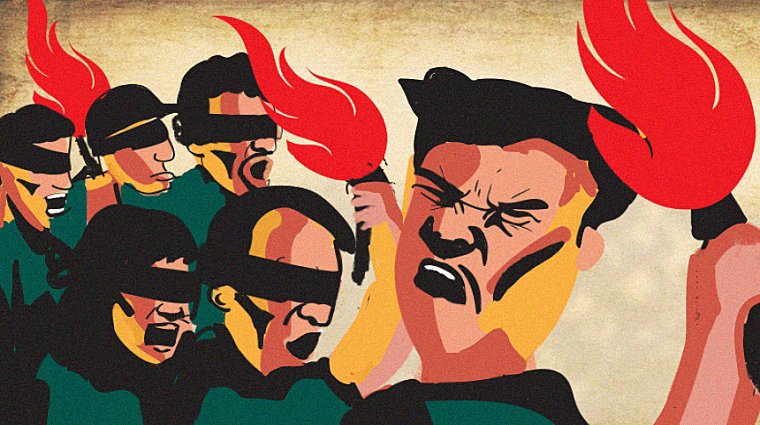After the First War of Independence or the Revolt of 1857 people of India developed a sense of nationalism for their motherland. They understood that they would need to fight for their country and save their motherland from the British Raj.
People developed a sense of nationalism. Nationalism denotes patriotism or devotion to the nation.
Culture revitalized in India in the 19th century. The reform movements went a long way towards arousing nationalistic passion against foreign domination.
Social reform movements played a significant role in shaping India. India has a long history of social reform movements.
Aurobindo Ghosh an Indian philosopher quoted that “it was in religion first that the soul of India woke and triumphed.” The 19th century saw a series of religious and social reform movements.
The social reformers believed that freedom and equality are the birthrights of every individual irrespective of their caste, sex, or religion. They attacked several social evils in the society and helped establish institutions.
Literature and Press were used as a powerful weapon for spreading social awareness and social reform measures among people.
Raja Rammohan Roy (1772 – 1833) played a significant role in bringing the reform movements.
Raja Rammohan Roy stresses on the fact that all religions are equal and there should lie unity among all the religions. He was inspired by the monotheism of Islam, the ethical teachings of Christianity, and sublime the doctrines of Upanishads.
He established the Brahmo Samaj in 1828. Brahmo Samaj brought with it a new awakening in India. It included religious, political, and social reform. The Brahmo Samaj attacked the caste system, the practice of polygamy, child marriage, and the Sati system. Brahmo Samaj believed that women should be given the right to property and that the illegal practices should be stopped in India.
Though Rajat Rammohan Roy believed that liberty is a priceless possession of every individual and Indians must be given liberty their civil rights, he still recognized that the British rule was a blessing because he understood the importance of the English Language and Western Education and how necessary it was.
He started newspapers to make people aware of the condition of India and that all must be stand united to fight against the evil beliefs of the society and also against the British Raj.
Another highly admired social reformer was Jyotiba Phule who strongly believed in the upliftment of the lower caste. He believed the problems of Dalit could be solved if they were provided with proper education. Not only did he believe in the upliftment of lower caste but also the upliftment of women.
He established the first girls’ school in India. He motivated women to study as they would only bring good to society. Satya Sodak Samaj was founded by him in the year 1873. The objective of the society was to endeavor to mitigate the distress and suffering of Dalits and women. He believed that British rule in India helped fight them against social injustice.
Swami Dayananda founded the Arya Samaj. The objective of the society was to oppose the caste system and encourage female education and remarriage of widows.
Another reformer, Swami Vivekananda founded the Ramkrishna Mission in 1896. Swami Vivekananda believed that service to God in the service of men and hence he established hospitals and orphanages to help people.
Sir Syed Ahmed Khan founded the Aligarh movement in India. The objective of the movement was to instill in the Muslims a desire for western education and culture.
Pandit Ishwar Chandra Vidyasagar worked for the betterment of the child widows and the upliftment of women. He was against child marriage and in favor of education to women.
All these reformers denounced the untouchability and rigidities of the caste system. They wanted to promote ideas of brotherhood and equality among all the sections. They boldly preached the gospel of strength and self-reliance at a time when the nation was seized with despair.
All these reformers believed that the upliftment of women must come first and then only can any good come about for the country. They knew the advantages of Western education, so they wanted to make people aware of it.
Western education will bring about western ideas of liberty and equality among people. It would also become a common language for everyone which would make it possible for them to understand each other and plan a common program of action against the Britishers.
India had seen a lot of social reformers who came forward to help the society.
These social reformers believed that they need to bring positive development and growth in the country and awaken the Indian masses. Hence they tried to blend Indian values with the western principle and ideas so that all the superstitious beliefs could have vanished.
Also, they believed inequality among all the masses and gender. All these reformers not only helped get rid of the superstitious beliefs but also played a major role in removing the British Raj. The freedom movement was interwoven with social reforms. They sacrificed their lives for the freedom of the country and also for bringing social reform in the country. All these movements empowered a positive and logical viewpoint. It is because of these reformers our Indian society transformed.
This blog post is co-authored by the following people from the Institute Of Public Enterprise, Hyderabad:
- Dipak Gujrathi
- Aayushi Chetlangia
- Abha Sanghi
- Aman Kumar
Users not registered with Strictlylegal can Email us their content and the same are posted through this account. In case of abuse, kindly let us know at Contact@strictlylegal.in

Great…
Wow????????